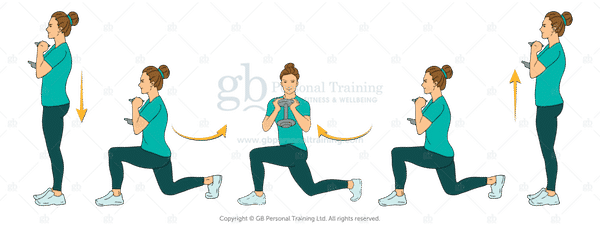Shop At Haya: Your Ultimate Shopping Guide
Discover the best shopping tips, trends, and deals for a smarter buying experience.
Forget the Gym: Why Functional Training is Your New Best Friend
Unlock your fitness potential! Discover why functional training beats the gym for real results and a healthier lifestyle.
The Benefits of Functional Training: Why It’s Perfect for Everyone
Functional training is a form of exercise that focuses on movements that mimic everyday activities, allowing individuals to build strength, endurance, and flexibility in a practical way. Unlike traditional workouts that may isolate specific muscle groups, functional training emphasizes a holistic approach by engaging multiple muscle groups and encouraging better coordination and balance. This makes it ideal for people of all fitness levels, from beginners looking to improve their overall health to seasoned athletes aiming to enhance their performance. By integrating exercises that promote real-life movement patterns, participants can achieve better stability, reducing the risk of injury during daily activities.
Additionally, the versatility of functional training is one of its greatest benefits. It can be easily tailored to suit individual fitness goals and preferences, whether it involves using bodyweight exercises, resistance bands, or free weights. This adaptability not only maintains engagement among participants but also fosters a supportive environment where everyone can work at their own pace. Furthermore, functional training often incorporates a sense of community, with group classes or partner workouts helping to boost motivation and accountability. As a result, everyone—from seniors looking to maintain their independence to busy professionals seeking efficient workouts—can reap the advantages of this dynamic fitness approach.

Functional Training vs. Traditional Gym Workouts: Which Is Better?
When it comes to choosing between functional training and traditional gym workouts, it's essential to understand the fundamental differences that can influence your fitness journey. Functional training focuses on exercises that mimic everyday activities, enhancing your overall body mechanics and stability. For instance, movements like squats, lunges, and kettlebell swings not only strengthen specific muscle groups but also improve coordination and balance. In contrast, traditional gym workouts typically center around isolated exercises, such as bicep curls or bench presses, which may build muscle but do not necessarily enhance functional strength and overall physical performance.
Ultimately, the choice between functional training and traditional workouts depends on individual goals and preferences. If your aim is to boost athletic performance and improve daily functional movements, then functional training could offer significant benefits. However, if you are focused on building size or strength in specific muscle groups, traditional workouts may be more suitable. To find a balance, many fitness enthusiasts combine elements of both approaches, tailoring their routines to meet personal fitness objectives while maximizing the advantages of each training style.
How to Get Started with Functional Training: Tips for Beginners
Functional training is an excellent way to improve your overall strength, flexibility, and endurance, making daily activities easier and more enjoyable. For beginners, the first step in your journey is to understand the core principles of functional training. This type of workout focuses on movements that mimic everyday tasks, emphasizing exercises that work multiple muscle groups at once. Start with bodyweight exercises such as squats, lunges, and push-ups to develop a solid foundation. Gradually incorporate equipment like resistance bands or kettlebells as you progress.
Before beginning any routine, it's essential to warm up properly to prevent injuries. A simple routine could include dynamic stretches or light cardio for about 5-10 minutes. As you design your functional training program, aim for 2-3 sessions per week that last about 30-60 minutes. Focus on form over speed; this will ensure you get the most out of each movement. Additionally, don't hesitate to ask for advice or guidance from a qualified trainer to help you tailor the program to your individual needs and goals.